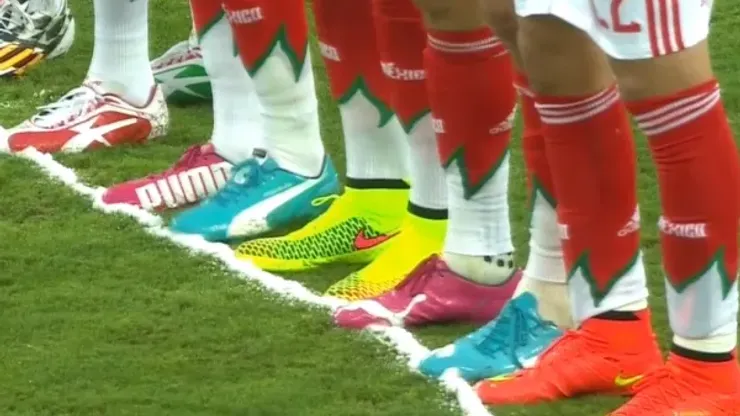A German inspection agency has come to the conclusion that the now famous vanishing spray used during 2014 World Cup matches contains parabens, a chemical linked with health issues. The agency, Technischer Überwachungs-Verein (TueV), issued a statement on the concern saying, “In its present form, the product is not usable in Germany and the European Union.” TueV also called the product “hormonally active”.
The website Safecosmetics.org calls parabens “several distinct chemicals with a similar molecular structure. Four of these are used frequently in cosmetics: ethylparaben, butylparaben, methylparaben and propylparaben. Methylparaben and propylparaben are the most common of these”.
They also claim that “parabens are most common in personal care products that contain significant amounts of water, such as shampoos, conditioners, lotions and facial and shower cleansers and scrubs, in order to discourage the growth of microbes.” The website also suggests that “parabens are linked to cancer, reproductive toxicity, immunotoxicity, neurotoxicity and skin irritation”.
9-15 spray entrepreneur Pablo Silva told Bild Newspaper, “If the DFB uses the spray from another provider, we will complain about it. The spray is no risk to anyone’s health. More than 300,000 games were conducted with the spray. We obey all laws. There is, in my view, no reason not to use the spray in Germany”.
Vanishing spray was introduced in South America 14 years ago. Since the introduction of the handy spray in 2000, the Copa America, Major League Soccer, 2013 FIFA U-20 World Cup, 2014 UEFA European U-17 Championship, and the 2014 FIFA World Cup have all made use of the spray. Beginning last month, the Barclays Premier League has also used the vanishing spray during league matches, as well as other top leagues around the world.
The vanishing spray is normally met with loud applause and cheer by fans when referees use it during matches. The clever invention allows the referee to see if defenders stay the required distance (10 yards) away from an attacking free kick during matches. The foam disappears from the pitch after a minute or so.
The German inspection agency’s findings are interesting since it is now widely used around the world by soccer referees. Did other countries do enough research on the product before allowing it during their league matches? Is the German agency blowing the use of parabens in the spray out of proportion? Either way, there are sure to be further discussions by soccer leagues around the world on whether or not to join in on the investigation.
Arsenal’s Santi Cazorla was accidentally sprayed in the face with the 9-15 vanishing spray by referee Jon Moss during a Premier League match against Crystal Palace earlier in the season.
200+ Channels With Sports & News
- Starting price: $33/mo. for fubo Latino Package
- Watch Premier League, Women’s World Cup, Euro 2024 & Gold Cup
The New Home of MLS
- Price: $14.99/mo. for MLS Season Pass
- Watch every MLS game including playoffs & Leagues Cup
Many Sports & ESPN Originals
- Price: $10.99/mo. (or get ESPN+, Hulu & Disney+ for $14.99/mo.)
- Features Bundesliga, LaLiga, Championship, & FA Cup
2,000+ soccer games per year
- Price: $5.99/mo
- Features Champions League, Serie A, Europa League & Brasileirāo
175 Premier League Games & PL TV
- Starting price: $5.99/mo. for Peacock Premium
- Watch 175 exclusive EPL games per season






